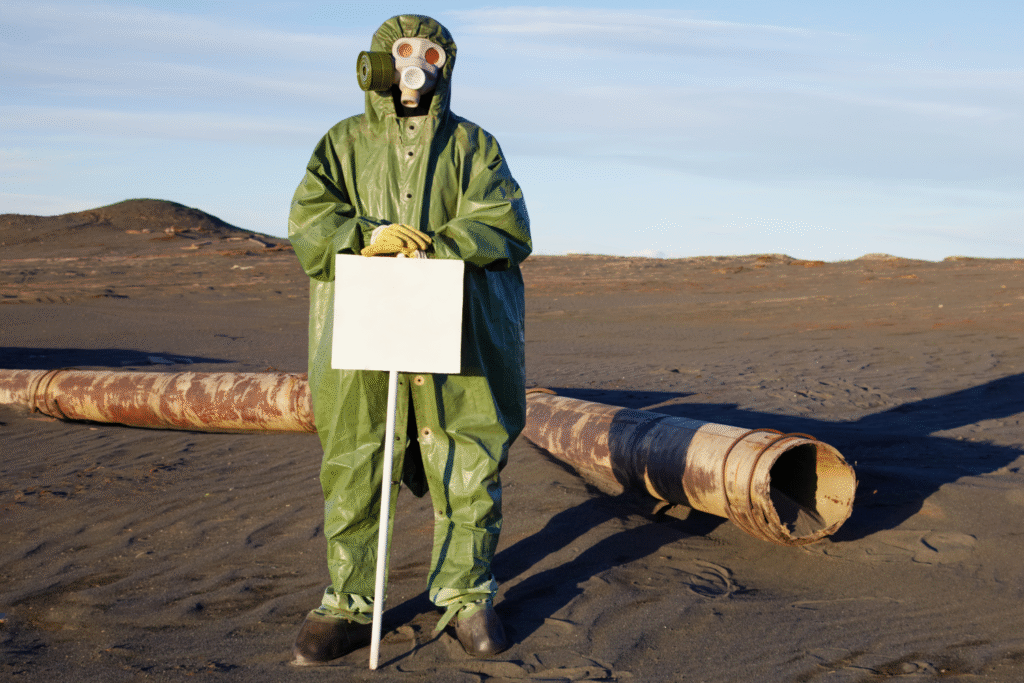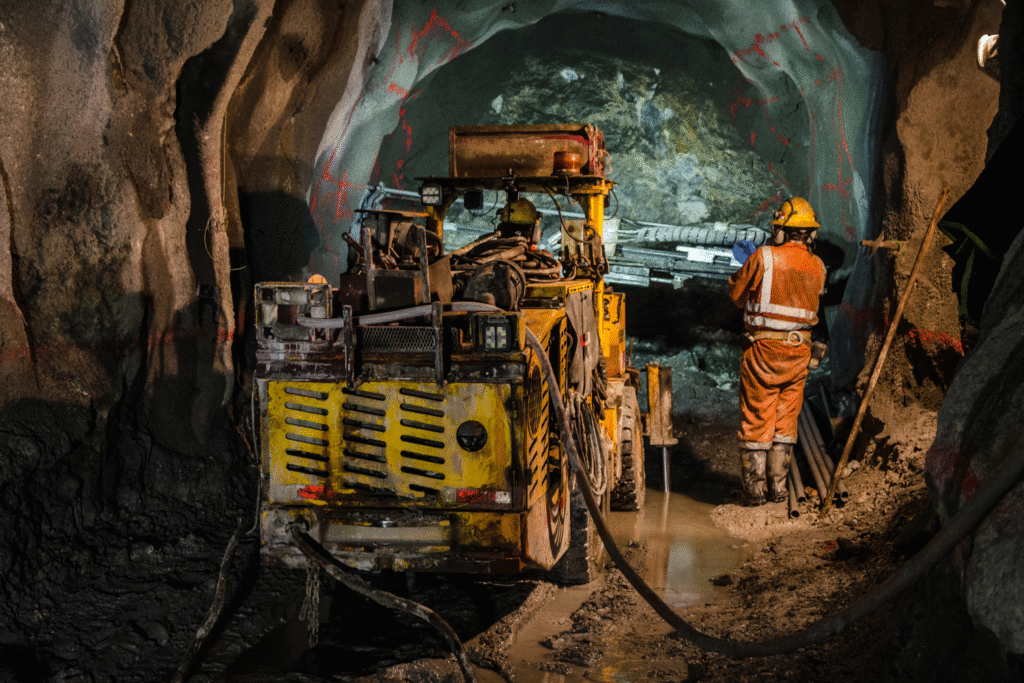New research confirms humanity is tracking toward civilizational collapse on schedule.

A chilling new study validates what MIT scientists predicted in 1972. Our current trajectory leads directly to societal collapse around 2040, and the warning signs are accelerating across every major system that supports modern civilization. The research, published by KPMG sustainability expert Gaya Herrington in the Yale Journal of Industrial Ecology, shows that real-world data aligns perfectly with the most pessimistic scenarios from the landmark “Limits to Growth” model.
What makes this particularly terrifying is that collapse doesn’t mean humanity disappears—it means economic growth stops, industrial output plummets, food production crashes, and living standards collapse back to early 1900s levels while supporting a much larger global population.
1. Economic growth hits terminal decline within a decade.

The comprehensive analysis published in the Yale Journal of Industrial Ecology concludes that current business-as-usual trajectories point toward the terminal decline of economic growth within the coming decade, with the steepest decline beginning around 2040 when industrial output starts its irreversible descent. This represents the end of the economic expansion that has defined human civilization for the past 200 years, marking a fundamental shift from growth-based societies to contraction-based survival modes that few modern institutions are designed to handle.
According to Gaya Herrington’s research, which represents the first time a top analyst within a mainstream corporate entity has taken the limits to growth model seriously, the data most closely aligns with scenarios showing economic slowdown and eventual halt in growth within the next decade. Her analysis demonstrates that half a century after the original MIT predictions, we’re tracking exactly toward the collapse scenarios that most experts dismissed as overly pessimistic, suggesting that the mathematical models were far more accurate than comfortable assumptions about technological solutions and market adaptations.
2. Food systems face cascading failures as resources hit limits.

Global food security hangs by increasingly thin threads as the fundamental resources supporting agriculture—fertile soil, fresh water, stable climate patterns, and energy inputs—simultaneously approach depletion points that threaten to trigger cascading crop failures across major growing regions. The 2025 Global Report on Food Crises documents how 281 million people currently face acute food insecurity, representing a massive increase driven by climate shocks, economic collapse, and conflict that overwhelm food distribution networks.
Current trends point toward the exhaustion of arable land by 2050, but this timeline may prove optimistic as soil degradation accelerates and climate change disrupts growing seasons across breadbasket regions from the American Midwest to Ukraine’s grain belt, as reported by agricultural researchers tracking global food system stability. Rice prices in Asia have already reached 15-year highs due to climate-reduced production and supply chain disruptions, providing an early preview of how food scarcity will reshape global economic relationships and trigger social unrest in vulnerable populations dependent on stable grain imports.
3. Infrastructure decay outpaces society’s repair capacity.

Critical infrastructure throughout developed nations is deteriorating faster than governments can afford to repair or replace it, creating cascading system failures that compromise everything from electrical grids and water treatment facilities to transportation networks and communication systems. The mathematical reality of declining marginal returns on infrastructure investment means that societies reach points where the cost of maintaining complexity exceeds the benefits it provides, forcing difficult choices about which systems to preserve and which to abandon.
Research published by the World Economic Forum identifies infrastructure decay as a primary risk factor for economic downturn across multiple developed nations, with aging systems requiring exponentially increasing resources to maintain basic functionality while providing diminishing returns on investment, according to analysts tracking global infrastructure resilience. The United States faces a multi-trillion-dollar infrastructure deficit, while European nations struggle with legacy systems designed for smaller populations and different energy sources, creating vulnerability cascades where single points of failure can trigger regional system collapses that overwhelm emergency response capabilities.
4. Resource extraction costs skyrocket as materials become exhausted.

The era of cheap, easily extracted natural resources is ending as mining operations move to increasingly remote locations, tap lower-grade ores, and require more energy-intensive processes to extract the materials that support industrial civilization. This fundamental shift in resource economics creates inflationary pressures that compound across every sector of the economy, making previously profitable activities uneconomical and forcing societies to choose between maintaining current consumption levels and investing in future sustainability.
Energy return on investment ratios for fossil fuel extraction have declined steadily over decades, requiring more energy input to extract each unit of usable fuel while alternative energy sources struggle to match the energy density and scalability of conventional petroleum-based systems. The transition costs between energy systems create economic bottlenecks that can trigger the kind of systemic failures that characterize societal collapse, particularly when resource constraints coincide with other stresses like climate change, political instability, and demographic transitions.
5. Climate tipping points accelerate beyond adaptation efforts.

Multiple climate systems are approaching irreversible tipping points that will fundamentally alter Earth’s habitability regardless of future emission reductions, creating cascading environmental changes that overwhelm human adaptive capacity and trigger large-scale population displacement and resource conflicts. The West Antarctic Ice Sheet collapse appears unstoppable, while the Atlantic Meridional Overturning Circulation faces potential shutdown within decades, either of which would reshape global climate patterns in ways that make current agricultural and population distributions unsustainable.
Temperature records continue breaking as global average temperatures remain consistently above 1.5 degrees Celsius, the threshold beyond which climate impacts become increasingly severe and unpredictable, affecting everything from crop yields to extreme weather frequency to disease vector expansion. The pace of environmental change now exceeds the rate at which natural and human systems can adapt, creating the kind of ecological cascade failures that historically preceded societal collapse in regions from the Maya lowlands to Easter Island.
6. Political systems cannot coordinate responses to global crises.

Democratic governance systems designed for gradual policy adjustments cannot process the rapid, fundamental changes required to address simultaneously occurring economic, environmental, and social crises that demand coordinated international responses exceeding current institutional capabilities. Political polarization and short electoral cycles prevent the long-term planning and resource allocation necessary to navigate systemic challenges that span decades and require sustained cooperation across competing national interests.
International cooperation continues deteriorating as resource scarcity and climate impacts intensify competition between nations, while domestic political systems fragment under the stress of managing declining living standards and increasing inequality that undermine social cohesion. The failure of governance systems to facilitate necessary changes creates the kind of institutional breakdown that characterizes the transition from complex societies to simpler, more localized forms of social organization that can better adapt to resource constraints and environmental instability.
7. Wildlife faces extinction cascades as ecosystems collapse.

Vertebrate populations have declined by an average of 69 percent since 1970, with some regions experiencing losses exceeding 90 percent as habitat destruction, climate change, pollution, and direct exploitation combine to trigger ecosystem-wide collapse that eliminates the biodiversity necessary to maintain stable food webs. Species extinction rates now exceed background levels by 100 to 1,000 times, representing a mass extinction event comparable to the asteroid impact that eliminated the dinosaurs but compressed into a timeframe measured in decades rather than millennia.
The collapse of insect populations threatens pollination services essential for agricultural production, while marine ecosystems face acidification, warming, and overfishing that eliminate entire trophic levels and destabilize ocean food chains supporting billions of people. Domestic animals face parallel threats as industrial agriculture concentrates genetic diversity into vulnerable monocultures while climate change disrupts feed production and increases disease pressure on livestock populations already stressed by intensive production methods designed to maximize short-term yields rather than long-term resilience.
8. Cities become uninhabitable as heat and infrastructure fail.

Cities worldwide face escalating temperatures that exceed human survival limits when combined with humidity levels that prevent natural cooling through sweating, creating deadly heat dome conditions that overwhelm air conditioning systems and electrical grids designed for historical climate ranges rather than current extremes. Urban heat island effects amplify regional warming by 5-10 degrees Celsius in dense metropolitan areas, making summer conditions potentially lethal for vulnerable populations without access to climate-controlled environments.
Water scarcity affects urban populations as supply systems struggle to meet demand during extended droughts while aging infrastructure loses increasing percentages of treated water through deteriorating distribution networks that cities cannot afford to replace. The combination of extreme heat, water shortages, and failing infrastructure creates conditions where major metropolitan areas become uninhabitable during peak summer months, forcing population relocations that overwhelm receiving areas and trigger secondary social and economic disruptions.
9. Financial systems destabilize as growth assumptions collapse.

Global financial markets depend on assumptions of perpetual economic growth that become mathematically impossible when resource constraints and environmental degradation eliminate the physical basis for continued expansion of industrial output and consumption. When growth stops or reverses, debt-based monetary systems face insolvency cascades as borrowers cannot generate sufficient income to service obligations predicated on future expansion that will never materialize.
Central banks exhaust conventional monetary policy tools as inflation from resource scarcity combines with deflation from economic contraction to create stagflationary conditions that resist traditional interventions designed for growth-based economies. The resulting financial instability triggers credit freezes, currency devaluations, and banking system failures that paralyze commerce and eliminate the complex financial relationships necessary to coordinate global supply chains and maintain technological civilization.
10. Mass displacement creates refugee crises beyond capacity.

Climate change and economic collapse will displace hundreds of millions of people from regions that become uninhabitable due to sea level rise, extreme heat, drought, or economic devastation, creating refugee flows that dwarf current migration patterns and exceed the absorption capacity of destination areas. These population movements trigger resource conflicts in receiving regions as competition intensifies for housing, employment, and public services already strained by economic decline and infrastructure decay.
Mass migration compounds existing social and political tensions while overwhelming border control systems and international humanitarian assistance programs designed for smaller, temporary displacement events rather than permanent population relocations affecting entire regions. The breakdown of orderly migration processes creates conditions for conflict, social fragmentation, and the kind of population movements that historically accompany societal collapse as people abandon areas where complex civilization can no longer function and seek refuge in regions with greater resilience and resource availability.
